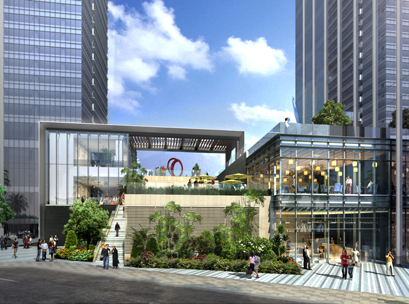Franchising, retail, business

23/09/2014
Architectural firm Benoy has shared insights into which trends are influencing the mixed-use sector.
Benoy also highlighted how these trends are being realised in their designs.
Developing the rooftops of mixed-use developments into functional spaces can help give back green, civic areas to the community. As seen with Chengdu IFS, the development was transformed by its vast landscaped rooftop oasis which sits above the retail podium. The space offers a sculpture garden, art gallery and al fresco dining precinct to create a cultural heart of the city.
Reinterpreting local and historical architectural styles into large-scale mixed-use developments allows these modern schemes to build a sense of place. The completed Shanghai ICC inspired by the old shikumen houses of Shanghai and the future Sichuan Urban Complex in western China with its pitched roofs referencing the vernacular architecture of Chengdu are prime examples of these trends.
Revitalising old buildings and retaining their character for future generations is an exciting step forward the sector. DreamCenter in Shanghai is currently one of China’s largest cultural investment projects and is located on the site of past cement factory. The masterplan incorporates the industrial buildings into the future plans and so instead of being demolished they will be refurbished into new landmarks for the city.
New mixed-use developments should consider the existing local landscape and look to preserve the environmental assets of a site. Lan Kwai Fong Wuxi for example has embraced the local connection to canals and water. The natural waterway which runs through the development has become one of the main features.
Commercial design that enables a more sustainable and healthy environment should be prioritised. As seen with Qian Tan Office Park in Shanghai, an eclectic and accessible mix of outdoor spaces, sustainable design and pedestrian-friendly strategies help to enhance future workplaces. Similarly, Westgate in Singapore brings to the district a 20-storey commercial tower which seamlessly connects to a vibrant semi-outdoor retail and dining precinct. With vertical landscaped gardens, water features and garden public spaces, the development offers an oasis for the working community.
Leisure and adventure destinations have always been big draw cards in major cities, and now we are seeing a new wave of recreational, mixed activity developments. Urban Adventure is one such example and the thinking behind the scheme is simple – combine extreme sports with stimulating, recreational activities to create a weatherproof environment that appeals to all ages and abilities.
“Understanding and pre-empting the shift in consumer preferences is also extremely important in creating successful and dynamic destinations,” said director Ferdinand Cheung.
By:http://insideretail.asia/2014/09/23/retails-place-mixed-use-trends/